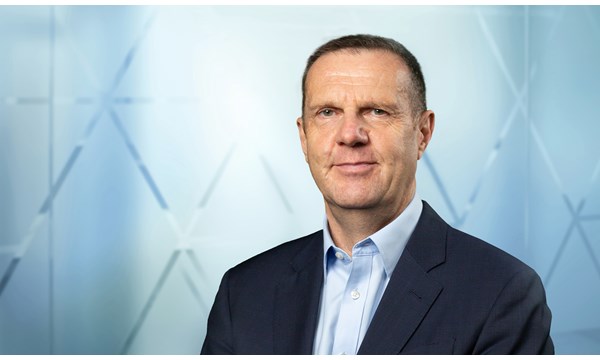1 minute read
Prakash Sharma
Vice President, Head of Scenarios and Technologies

Prakash Sharma
Vice President, Head of Scenarios and Technologies
Prakash leads a team of analysts designing research for the energy transition.
Latest articles by Prakash
-
The Edge
The narrowing trans-Atlantic divide on the energy transition
-
Opinion
Energy transition outlook: Asia Pacific
-
Opinion
Energy transition outlook: Africa
-
The Edge
COP29 key takeaways
-
The Edge
Is it time for a global climate bank?
-
The Edge
Artificial intelligence and the future of energy
Significant additional investment and political will are needed.

Neal Anderson
President and CEO, Wood Mackenzie
Neal leads our expert teams to deliver exceptional value and insight for clients worldwide
Latest articles by Neal
-
Opinion
Why women will shape the future of natural resources
-
Opinion
A call to action to the global energy industry
How does Wood Mackenzie define "the energy transition"?
Rapid technological advancement across a variety of industries is enabling society’s quest for sustainability at an unprecedented pace. The resulting energy transition is causing an epochal shift in how the world’s population consumes energy and natural resources, driven by a range of factors, including climate change and emerging technologies.
We’ve so far modelled two energy transition scenarios to explore the many what-ifs inherent in any long-term cross-commodity forecast.
- The Energy Transition Outlook: This is our base case view across all global commodity and technology markets. It doesn't represent business as usual. Instead, it reflects an evolution of current policies and technology advancement. It accounts for some degree of business and consumer inertia. The outlook is broadly consistent with a ~ 3 °C global warming view.
- The Carbon-Constrained Scenario: The scenario outlook is leveraged from our base case. It represents an accelerated view of the energy transition. It is a much deeper view on decarbonisation and electrification, best efforts on technology, policy and cost reduction. It also reflects heightened societal preference for sustainability. It is what we think could happen over the long term if there is more radical change in the short term. It is broadly consistent with a ~ 2.5 °C global warming view.
We're also doing some work on a third scenario, the IEA's Sustainable Development Scenario (SDS), to understand what a more ambitious target such as this could mean for technology and commodities. We'll be releasing that analysis later this year.
- The IEA’s SDS: Also know as the 2-degree scenario, it quantifies the impact of successfully implementing major climate goals to limit global warming to 2 °C. It is the most common and standardised framework for quantifying a ‘2 degrees or lower’ outlook. We are not particularly confident that 2 °C can be achieved due to: the challenges across technology, policy, regulation and cost; inter-governmental constraints; trade and consumer choice; and what is built into the current energy systems of today.
For further discussion of energy transition scenarios, fill in the form on this page.
Is the energy transition moving fast enough to meet climate change targets and limit the damage caused by fossil fuels?
The energy mix is changing only gradually and the world risks relying on fossil fuels for decades to come. Despite great efforts to reduce costs in renewables, electricity, zero-carbon technologies and advanced transportation – not to mention burgeoning support in governmental policies – it is not enough. Our analysis sees carbon emissions continuing to rise into the 2020s, with growth slowing only in the 2030s. As a result, our Energy Transition Outlook (3 °C) and Carbon-Constrained Scenario (2.5 °C) fall outside 2 °C or lower trajectories.
To strengthen the global response to the threat of climate change by keeping a global temperature rise this century well below 2 degrees Celsius above pre-industrial levels and to pursue efforts to limit the temperature increase even further to 1.5 degrees Celsius.
The Paris Agreement, UNFCCC
What about the Paris Agreement?
The statement above from the United Nations Framework Convention on Climate Change is the central aim of The Paris Agreement, ratified at the 2015 United Nations Climate Change Conference in Paris (COP21).
But a lot has changed since COP21, and not for the better. The global backdrop has become more challenging and polarised – with less cooperation. The ongoing trade war is also impeding progress. Policies being promoted in the EU and smaller economies are helpful. Larger, energy-dense countries and energy-rich segments lack any serious progress.
When will 100% of the world’s electricity needs be met by renewable sources of solar and wind?
Certainly not by 2040 according to our analysis.
Wind and solar will contribute 24% of power supply by 2040 compared with 7% today. Although the competitiveness is improving, there are practical limitations to reaching a fuel mix comprised of 50% or greater share for solar and wind without long-duration energy storage. Critically, the renewable industry has yet to make a compelling case to investors; big questions remain about the risks of negative power pricing and the impact on returns.
What about heavy industry’s efforts to decarbonise?
Decarbonisation is only slowly taking hold beyond the power sector. The obstacles presented in industry, manufacturing, housing, aviation, shipping, agriculture and heat dwarf those in power and road transport. Little to no progress has been made in commercialising technologies in those segments; hopes are turning to hydrogen and carbon capture and storage (CCS) as the panacea. But those large industrial segments also face geopolitical problems.
Take decarbonisation of an industry like steel, which is highly competitive and has ‘national champions’ in China, South Korea and Japan. Steel has also been at the core of trade disputes since 2014. Who will be willing to create ‘green steel’ first when the returns are not visible?
What would it take to stay below 2 degrees?
Limiting global warming to 2 °C by 2040 is a massive global challenge. Achieving it requires urgent policy and regulatory initiatives in laggard OECD and non-OECD countries, too. These must include tax policy and subsidies that incentivise R&D and capital allocation into zero-carbon technologies. Investment in renewables will need continued support, as will the transformation of existing technologies – carbon capture, utilisation and storage, batteries and long-duration energy storage, hydrogen and alternatives in non-power – into commercial propositions. Let that be a call to action to the global energy industry and the policy-makers who oversee it.
What’s Wood Mackenzie’s outlook for the energy transition?
Our latest view, The Energy Transition Outlook H1 2019, is based on a bottom-up, asset-based, investor-led perspective – something nearly no other company can deliver. It is based on fundamentals and objective thinking. It is supplemented by our relationships across every major asset class, government and demand segment. It is a result of our teams pushing the cost technologies and adoption rates as much as we think can happen, given the inertia already embedded within multiple business cycles.
What emerged is a conservative outlook, one in which the current pathway looks more like 3 °C of warming than the 2 °C or lower advocated in Paris.
What’s inside The Energy Transition Outlook H1 2019?
Subscribers to our Global Energy Transition Service are entitled to the full 100-page report, which includes the following:
- Key Takeaways and Implications
- Macro Economic Climate and Trade
- Demand and Regional Themes
- Supply and Regional Themes
- Individual Commodities/Fuels/Technologies
- Key Segments: Power
- Key Segments: Transport
- Emissions, New Technologies, Emerging Themes
- Investment and Corporate Strategies
- Comparisons to other outlooks
- Wood Mackenzie Energy Transition: Product Development Horizon
Not a Wood Mackenzie client? Fill in the form on this page to get an interactive extract of the report or purchase the 40-page version in the store.









